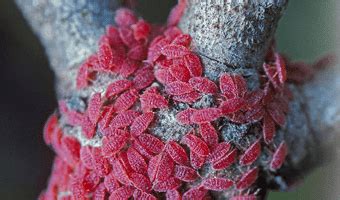INDEX:
INTRODUCTION:
I experienced a fine example of seeking the truth in yesterday's Torah study.
Exodus 26:1 reads, “Moreover thou shalt make the tabernacle with ten curtains of fine twined linen, and blue, and purple, and scarlet: with cherubims of cunning work shalt thou make them.” (KJV)
The word that people keyed on was scarlet which in all but two places in the Pentauch is referenced to Stong's numbers 8144 and 8438. The story told among some of the participants at the study was that this word refers to a red worm which when it lays its eggs on a tree, causes a red stain to be left on the tree and this is a shadow picture of the Messiah shedding his blood on the cross for the rebirth of many.
Sounds really neat but is it true or is it just a fable? Let's take a look.
To start with, the first TWO instances of that word reference ONLY to Strong's number 8144. If you use the practice of first usage in your definitions this is important but not definitive in and of itself.
Strongs 8144 references the word 'scarlet' to the Hebrew word 'shaw-nee' which is of uncertain derivation and means “crimson, the insect of its color, also stuff dyed with it.”
Strongs 8438 references the world 'scarlet' to the Hebrew word 'to-lah'-ath' which means “a maggot (as voracious); (often with 8144), the crimson-grub, but used only (in this connection) of the color from it, and cloths dyed therewith.”
So the Strong's gives us a possible link to a scarlet worm but it is not definitive (the derivation of the word is uncertain) nor is there any mention of a red stain left on the tree during the birth or life cycle of the insect.
If you do an Internet search of 'crimson worm' or 'scarlet worm' or 'red worm' you will find a plethora of alleged bible scholars telling the story of the crimson worm and how it leaves a red stain on the trees during it's reproduction cycle and how this is a shadow picture of the Messiah, etc., etc., etc. While this is all very interesting, none of it is definitive, even in it's abundance. However, in reading through this, you will find another clue and that is the Latin genus name of the insect, 'kermes vermilio'.
When you do an Internet search on scientific sites of the insect, relative to it's use in dyes, you will find that a red dye is made from the dried, crushed bodies of the adult insect and you will not find ANY reference to ANY type of red stain left by the insect at ANY time in it's life cycle.
So in conclusion, while the story going around sounds really neat, the probability is that it is just a fable and therefore not true. Just as likely an explanation is that the word was used to describe the color red in the same manner as we would say black as coal, blue as the ocean, or yellow as a buttercup today.
For what it's worth, most folks were disappointed to find out they couldn't verify the story. Oh well.

